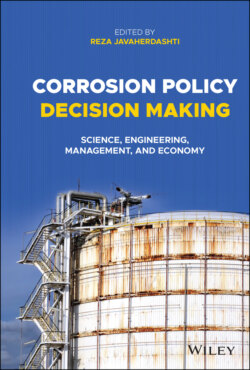Читать книгу Corrosion Policy Decision Making - Группа авторов - Страница 35
2.2.5.8 Technical Painting Operations
ОглавлениеPainting application requires special skills; the inexpert technician can lead to the destruction and complication of the film. Examples of paint application problems are shown in Figure 2.17. It is necessary for the executors be aware of the causes of paint defects and the method of avoiding, eliminating, and correcting these complications.
Figure 2.17 Some examples of paint application problems. Rusting on primer due to thin primer layer (a). Running of paint and settling of dirt due to adjacent blasting operation (b).
Many paint defects are mainly related to the method of their application. The wrong choice of hardener and thinner for paints, incorrect mixing of paint components, and wrong choice of different layers of a paint system are the most common causes of complication in paint application. Accuracy at the important points in the catalog can cut problems. Lifting, orange peel, overspray, pinholes, spatter coat, etc. are some of the complications that may occur due to these problems [7].
Excessive hot or cold temperature of the substrate, high humidity, dust, and local pollution are other factors that may cause complications during paint application. Adherence to implementation instructions greatly reduces these problems. Complications such as amine blushing, blushing, holidays, rusting, etc. are observed in these conditions [7].
Inadequate regulation of paint viscosity and spraying pressure in airless spraying, as well as inadequate air‐to‐paint ratio in air spraying methods are other causes of complications during application. These factors lead to difficulty in achieving the right thickness as well as complications such as sagging and running, etc.
